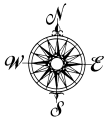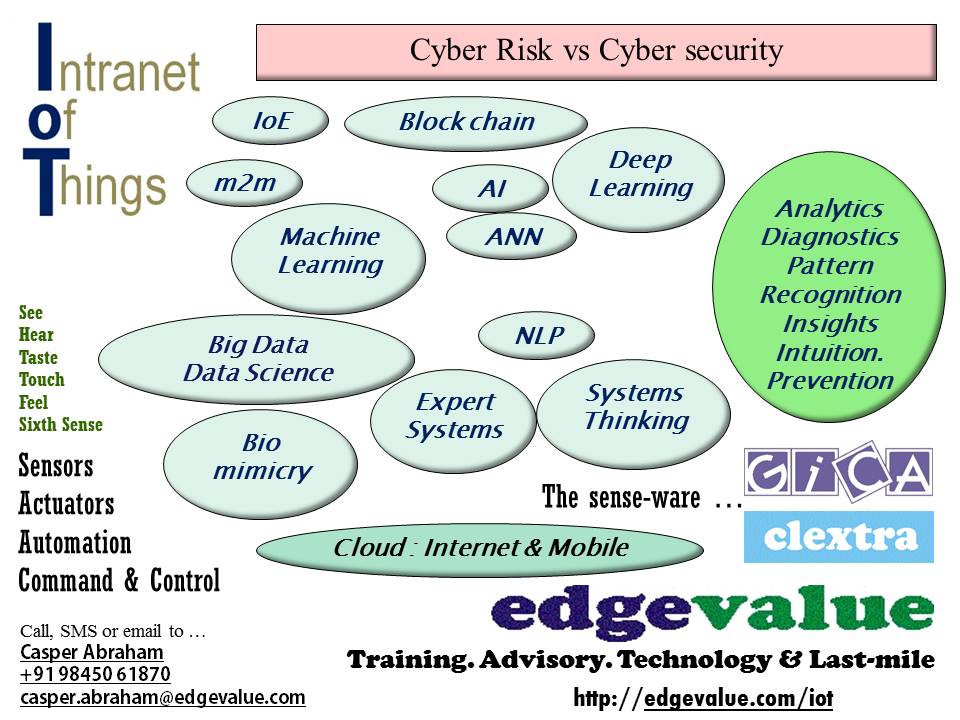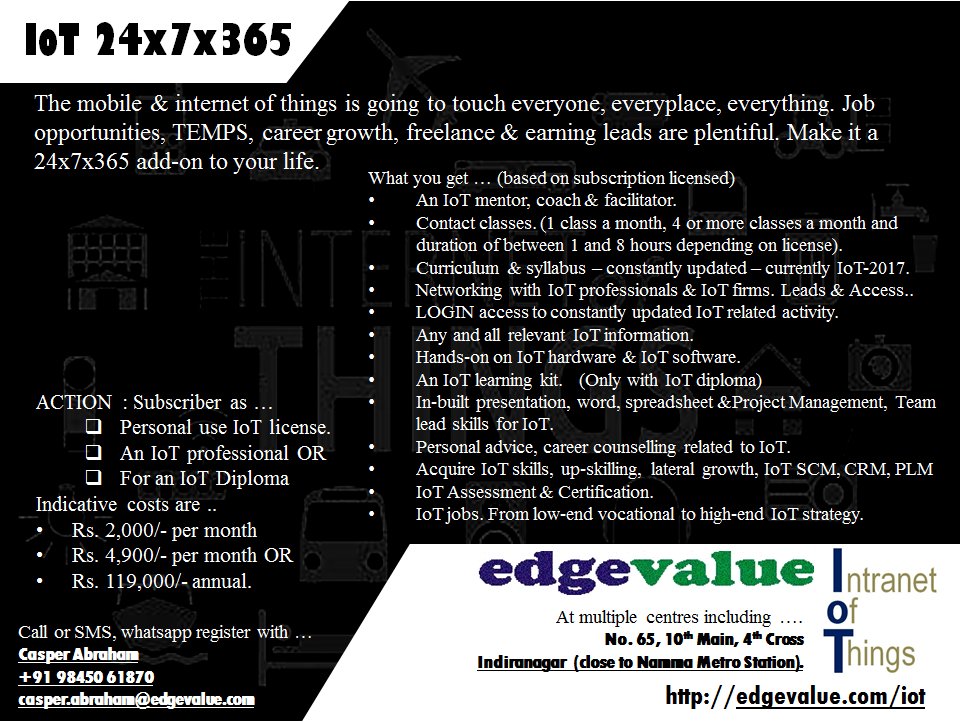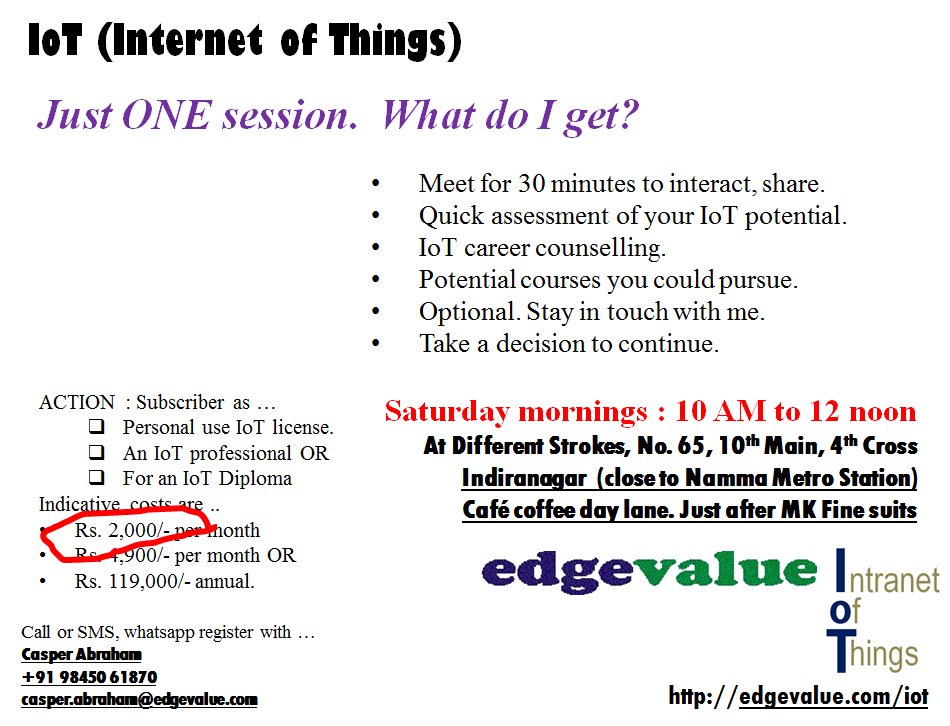







 | |||||
|---|---|---|---|---|---|

|

|

|

|

|
|
 | |||||
 |
|||||

    |
IoT (Intranet of Things) IoT (Intranet of Things and focus on India) Retail & Corporate solutions! |
The Internet of Things is going to require HUGE, reliable back ends. Whether industrial or consumer. A lot of middle-ware, intermediate modules & components will be required apart from the current zillions of devices, wearables, sensors, actuators & high visibility of downloadable Apps. For users. The "skill-sets" required for designing, architecting, developing, acquiring, testing, integrating, deploying, maintaining the backends will require 10's of 1,000's of skilled professionals near non-existent today. Inherently "IoT" implies a definite mix of "hardware" and "software". Typically the 2 industries have been kept apart - starting with even industry associations in India such as "MAIT" and "NASSCOM". Even financially, till GST comes up, one is a VAT product the latter is a TAXED Service. An added skill-set is "consumer behaviour". UI/UX, ergonomics, usability, recall, recognition, branding is what will separate the few winners from the current "zillion" apps that consumers can choose from. A good place to start would be unix. Digging deeper it can be linux & flavours of linux. Whether Windows, IoS, Android, BSD, email, DNS, ONS, TCP-IP, Zigbee or 4G, internet or mobile the backend will all come back to some very simple basics and fundamentals that are MANDATORY, must-know, must-have, must-master to be able to build anything above it. 
IoT view from a Risk perspective ... 
IoT view from a learning & decision-making partnership ... 
REGISTER for a subscription ... 
In Bangalore you can drop in but talk to me from anywhere in the world ... 
AI (Artificail Intelligence) has been dreamed of for the last 100 years. However due to a range of recent technologies this really has some tractioin and potential benefits. However for most sceptics AI at its best for them today is Machine Learning. Machine Learning (ML) comes essentially form industrial automation and the enormous amount of data being generated by social media using techniques to make some or any sense for all this. The one big computing difference is that the code and computing is NOT fixed and finite like conventional ERP or anything else. A model can be assigned, trained, evaluated and improved by computing & automation itself. A computer language like Python can provide this. The cloud has evolved into an almost mature technology. The cloud is dependent on the Interent and mobile, 2 very dependent constantly evolving technologies. You don't need your own data centre, servers, routers, switches, power, power backup, housekeeping, storage, archiving and the teams and mnapower to manage all this. It can be done at much lower cost, with better expertise, more safely and securely at varaible cost externally - on a cloud. Big data menas a lot more data than you probably need. Earlier sampling may have been 5%, but now you can collect 100% of all data generated and with IoT (Interent of Things) and automation data generation can be 10,000% or even more 100 times more data than you want to capture, transmit, store, see or use. Natural language processing NLP has come a long way today. Computers can understand, listen, speak and act quite intelligently. Note Siri on an Apple phone, Google talk, driverless cars and more. In the NLP IoT space, people can talk to things and things will talk back. It has started happening already. Hence the need for Analytics. Statistics, data-science, pattern recognition, insights& even intuition can be - and is - all bundled into big-data. Which part of the data is important? Why? How? Where? When? How do I see this visually? How do I catch exceptions? What about Cyber-security? What is cyber-risk? Pattern recognition, intuition, insights are all the higher level manifestation of what percentage of the data I need. Deep Learning is based on ANN (Artificial Neural Networks). A bit like life sciences and intelligence works. Based on neuroscience it can handle volumes of information in inputs, storage, transfer and output on a very different scale. This is already proviing beneficial for example in identifying millions of images online - recoginising pictures of cats or a particular flower for example - searching on an image. This is starting to make a differnce in genetric expression, nano technology, proteins, metabolism & a host of healthcare benefits. Bio mimicry can be and is the basis of understanding anything in nature applicable to artificial worlds. Individuals, teams and team-leads putting all this together have to understand Systems thinking.. How systems work? Bike-like systems vs Frog-like systems. How systems integrate? Inter-disciplanary learning. Cross-industry applications. Finding the LCM & HCF of anything. MECE - mutually exclusive collectively exhaustive. Silos hardly exist in nature. Understanding of eco-systems. IoT (Internet of things or even the interent of everything) means the raw data comes from our eyes, ears, mouth, tongue, touch & feel - today automated as sensors. Actuators are the actions taken after sensing and acted upon based on some intelligence or need. A wearable watch for example may be able to predict the onse of a diabetic attack or a heart event. An injected capsule could be powered by stomach acid or White blood corpuscles and stay within your body to predict a cancer. The sensor and actuators are the command & control for all computing & automation. At Edgevalue we provide the 4 corners to make things happen ...
|
|---|